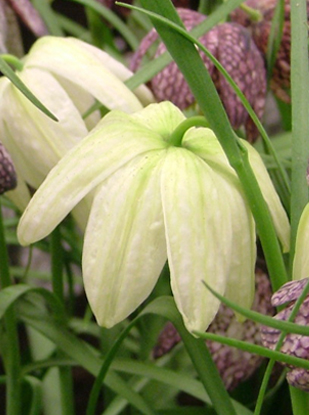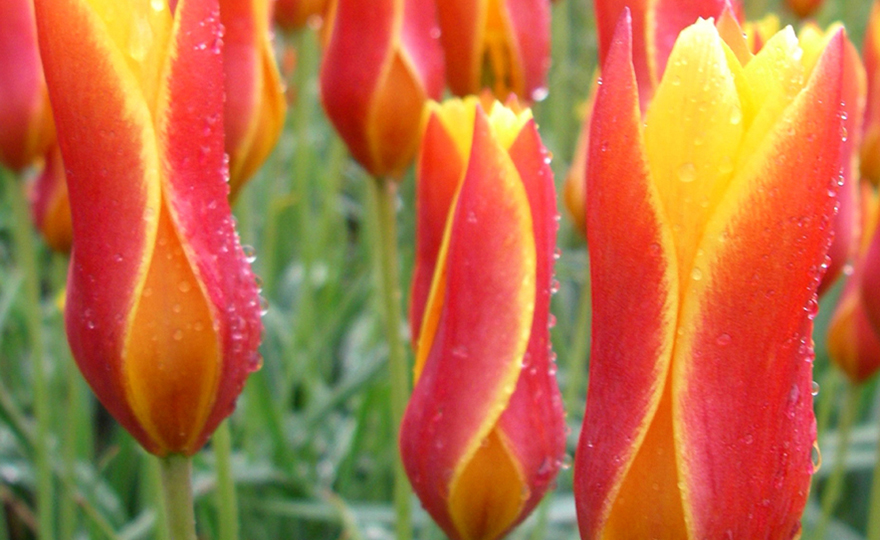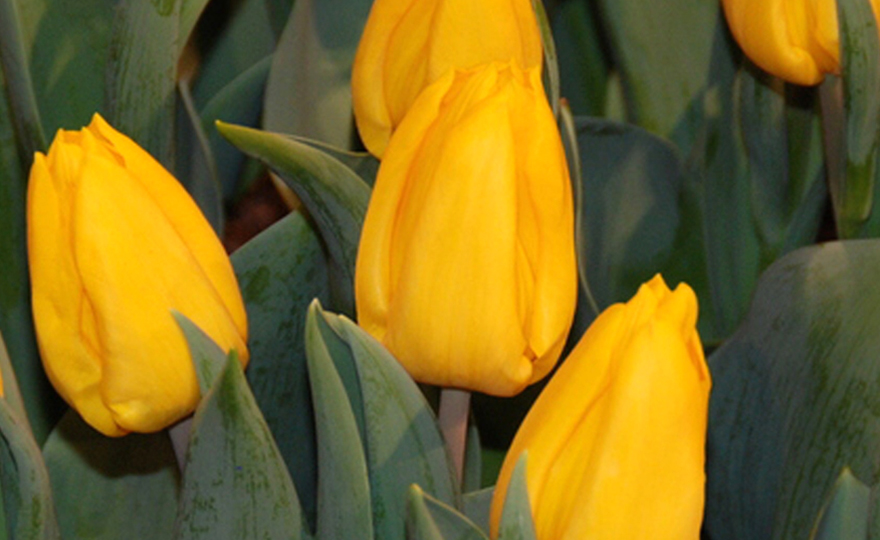
Fritillaria, Meleagris Alba
-
- **SOLD OUT** HOLIDAY GIFTS **SOLD OUT**
- **SOLD OUT** Holiday Books **SOLD OUT**
- **SOLD OUT** Holiday Citrus **SOLD OUT**
- **SOLD OUT** Holiday Gift Certificates **SOLD OUT**
- **SOLD OUT** Holiday Paperwhites **SOLD OUT**
- **SOLD OUT** Holiday Praying Mantis Kits **SOLD OUT**
- **SOLD OUT** Holiday Tools **SOLD OUT**
- **SOLD OUT** Holiday Wildflower Mixtures **SOLD OUT**
- Citrus Trees
- **SOLD OUT** - Vegetable and Herb Plants - Mix & Match any 6 Plants for $50 - Only Shipped in Quantities of 6
- Elephant Ear Plants & Roots
- **SOLD OUT** 4-Inch Pot Herb Plants **SOLD OUT**
- Rare Plants
- **SOLD OUT** Vining Plants **SOLD OUT**
- Asian Seeds
- Beneficial Bugs
- Books
- Citrus Fertilizers
- Cold-Treated Bulbs - SEE BULBS FOR FALL PLANTING TO ORDER
- Cold-Treated Allium
- Cold-Treated Chionodoxa
- Cold-Treated Crocus
- Cold-Treated Hyacinthoides
- Cold-Treated Hyacinthus Orientalis
- Cold-Treated Narcissus
- Cold-Treated Cyclamineus Narcissus
- Cold-Treated Double Heirloom Narcissus
- Cold-Treated Jonquilla Narcissus
- Cold-Treated Large Cupped Narcissus
- Cold-Treated Poeticus Narcissus
- Cold-Treated Small Cupped Narcissus
- Cold-Treated Species Miniature Narcissus
- Cold-Treated Split Cupped Narcissus
- Cold-Treated Tazetta Narcissus
- Cold-Treated Triandus Narcissus
- Cold-Treated Trumpet Daffodils
- Cold-Treated Ornithogalum
- Cold-Treated Rock Garden Iris
- Cold-Treated Scilla
- Cold-Treated Tulips
- Cold-Treated Emperor Tulips
- Cold-Treated Fringed Tulips
- Cold-Treated Green or Viridiflora Tulips
- Cold-Treated Lily Flowering Tulips
- Cold-Treated Parrot Tulips
- Cold-Treated Peony Flowering Tulips
- Cold-Treated Single Early Tulips
- Cold-Treated Single Late Tulips
- Cold-Treated Species Tulips
- Cold-Treated Triumph Tulips
- Flower Bulbs, Corms and Tubers
- **SOLD OUT** Bulbs for Spring Planting **SOLD OUT**
- **SOLD OUT** Begonia **SOLD OUT**
- **SOLD OUT** Cannas **SOLD OUT**
- **SOLD OUT** Crocosmia **SOLD OUT**
- **SOLD OUT** Gladiolas **SOLD OUT**
- **SOLD OUT** Pineapple Lilies **SOLD OUT**
- **SOLD OUT** Caladiums **SOLD OUT**
- **SOLD OUT** Calla Lilies **SOLD OUT**
- **SOLD OUT** Dahlias **SOLD OUT**
- **SOLD OUT** Specialty-Gallery-Dark Angel Series **SOLD OUT**
- **SOLD OUT** Specialty Dahlias **SOLD OUT**
- **SOLD OUT** Specialty-Anemone Flowering Dahlias **SOLD OUT**
- **SOLD OUT** Cactus Dahlias **SOLD OUT**
- **SOLD OUT** Decorative Dahlias **SOLD OUT**
- **SOLD OUT** Dinnerplate Dahlias **SOLD OUT**
- **SOLD OUT** Fimbriata Dahlias **SOLD OUT**
- **SOLD OUT** Specialty-Gallery Dahlias **SOLD OUT**
- **SOLD OUT** Specialty-Peony Flowering Dahlia **SOLD OUT**
- **SOLD OUT** Specialty-Pom Pon Dahlias **SOLD OUT**
- **SOLD OUT** Lilies **SOLD OUT**
- Bulbs for Fall Planting - ALL BULBS AVAILABLE ARE COLD TREATED FOR PLANTING AS SOON AS SOIL CAN BE WORKED
- Fall Blooming Bulbs
- **SOLD OUT** Bulbs for Spring Planting **SOLD OUT**
- Garden Tools & Equipment
- Gift Certificates
- HHH Exclusive Wildflower Mixtures
- Wildflower Mixtures
- Heirloom Garlic
- **SOLD OUT** Potatoes **SOLD OUT**
- Roots & Sets
- Seeds
- Flowers
- Herbs
- Vegetables
- **SOLD OUT** HOLIDAY GIFTS **SOLD OUT**
-
- No products to compare
-
Quick Overview
FRITILLARIA, Meleagris Alba
Fritillaria meleagris Alba is a naturally occurring and frequently occurring sport of Fritillaria meleagris. It is an excellent pollinator plant, beloved by bees, and deer and critter resistant.
These plants can reach a height of 6-8 inches and are hardy from Hardiness Zones 3-8. They are good forcers. For a presence in the garden, at least 10 bulbs should be planted together. HZ: 3-8 6″-8” Mid Season

Fritillaria, Meleagris Alba
Fritillaria Meleagris Alba, AKA The Snake’s Head Fritillary, are among the smallest of all Fritillaria, but they produce an amazing presence in any garden. They are native to Europe (southern England to the northern Balkans and western Russia) and naturalized in Scandinavia. Sometime during the 1600’s, the plant made its way to the United States. Thomas Jefferson was evidently fascinated with the plant, but had a difficult time getting it started. His diarie indicated that he placed 5 orders for bulbs before he was successful. The roots he finally received thrived so well that he divided them and placed them throughout the property. Plant smaller bulbs 5-6” deep and 5’6” apart. Plant larger bulbs 6-7” deep and 8-10” apart.They are deer and critter resistant and excellent pollinator plants.
Anna Pavord in her book, Bulb, writes,
“An enchanting plant with wide, chunky, square-shouldered bells, just one on each stem, as broad as they are long. The petals a subdued purple (occasionally white) are checkered over with darker and lighter color to make tiny squares all over the surface. John Gerard called F. meleagris the Ginnie Hen flower, because of its appearance, “checkered most strangely: wherein Nature, or rather the Creator of all things, hath kepta very wonderful order, surpassing (as in all other things) the curiosest painting that Art can set downe,” He thought it had been brought into England from Orleans by a French Apothecary, Noel Caperon, killed in the massacre of Saint Bartholomew in 1572, but it is now considered an English native, a rare one, well established in a few sites such as the meadows of Magdalen College, Oxford and also near Cricklade, Gloucestershire. Fritillaria meleagris var. unicolor subvar. Alba (what a ridiculously overcomplicated name) is a fine white selection of the snake’s head fritillary…”
Fritillarias will prosper for years in moist, but well drained, organically-rich soil and full to partial sun. They are deer and rodent resistant. The bulbs are quite perishable so handle with care and PLANT IMMEDIATELY UPON RECEIPT. Plant 4-5 inches apart and 4-6 inches deep. Because of their tiny size, it is recommended to plant at least 10 bulbs in a group.
Planting Bulbs in the Fall for Glorious Spring Color
Bulbs are some of the easiest plants to grow. Fundamentally the process requires four steps.
1. Dig a hole.
2. Dust the hole with bonemeal.
3. Place the bulb in the hole.
4. Fill the hole with soil.
There are, however, some additional refinements which help produce even more lavish results and enhance protection from critters.
First, bulbs can and should be planted deeper than the instructions you receive on the package labels. An easy way to remember how deep to plant the bulb is to think of a quarter. If the bulb you are planting has the same diameter as a quarter or less, plant the bulb 4 inches deep. If the bulb is broader than a quarter, plant it 6-10 inches deep. Large bulbs like some alliums, camassias, standard tulips and fritillaries can easily be planted 10 inches deep. As the soil compacts days, weeks and months after planting, it produces a thinner layer of soil on top of the bulb. Planting bulbs deep helps with critter control. Moles, voles, chipmunks and squirrels are lazy little creatures, and they don’t like doing a lot of digging to reach their food.
Second, bonemeal is a must. It is an excellent source of calcium and phosphorus which help the bulbs to form a strong root system and healthy stems. For large bulbs (those bigger than a quarter), use ¼ cup per bulb. For small bulbs, dust the entire surface or hole where the bulbs will reside.
Third, small bulbs should be planted in clusters of 10 or more – 1 inch apart. Large bulbs, like allium, can stand along, but create a much more pleasing presence in the garden when planted is clusters of 3-5. They should be separated by no more than 4-6 inches.
Fourth, bulbs usually multiply fairly quickly and once crowded will not produce blossoms. Plan to divide your bulbs in mid-summer to fall when the top growth has dried out.
These simple, easy, quick tasks are all that is required to produce a lovely bulb display year after year.
Planting Bulbs in Containers
If you live in Hardiness Zones 5 and higher all you need to do is mix some soil. Check out the soil mix described in detail in our Harvesting History YouTube video. Do not use prepared soil mixes.
The Best Soil Mix for Containers
Always plant bulbs more densely in containers than in the ground. Pots as small as 6-inches in diameter can have a showy presence on a deck, porch or patio. You can use much larger pots and plant several kinds of bulbs.
Fill the pot half full, dust the soil surface with bonemeal, arrange the bulbs on top of the bone meal and fill the pot with the rest of the soil. Dust the surface of the soil with more bonemeal. Water thoroughly, but do not let the pot stand in a saucer of water.
If you live in Hardiness Zones 1-4, you must protect the pots by bringing them into an unheated garage or surrounding them with bales of straw. If you do not do this, the bulbs usually freeze and turn to mush.






